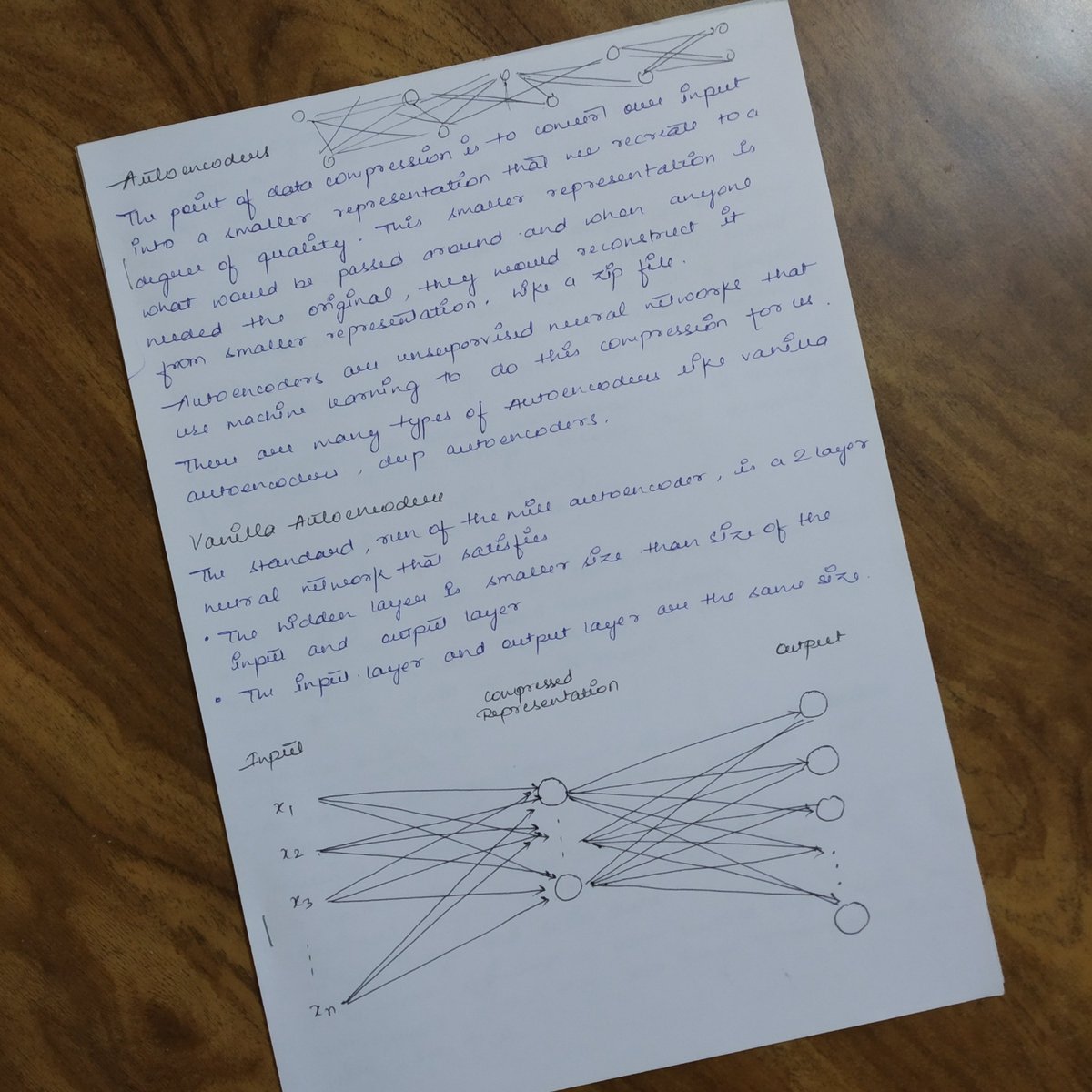
I had never seriously read a research paper 📃 before and I certainly didn't plan to write one, until I had to.
But I ended up finishing one that got accepted in a conference, it wasn't revolutionary but I was glad that I decided to do it and was able to finish
Here's how:👇
But I ended up finishing one that got accepted in a conference, it wasn't revolutionary but I was glad that I decided to do it and was able to finish
Here's how:👇
I was lucky to get past the first barrier quickly, choosing a subject or topic of research.
I was exposed to an image processing problem during my internship, which I really liked so I ended up pursuing the same for my research.
I was exposed to an image processing problem during my internship, which I really liked so I ended up pursuing the same for my research.
But if you're lost about the topic or what to choose, I suggest you check out the most recent papers, and see what interests you and move forward with that.
One good place to start is @paperswithcode
One good place to start is @paperswithcode
Initially, there was a fear that I am not actually good enough to be able to understand or implement it.
I looked up how other people started with reading research papers and there was a lot of common advice that I ended up taking.
I looked up how other people started with reading research papers and there was a lot of common advice that I ended up taking.
On the first read I,
🔹Skimmed through the paper
🔹Skipped the maths
🔹Tried to understand the problem statement
Re-read parts of it until I was able to understand the complete scenario
Then I tried to understand the mathematics behind it, I didn't understand every bit though.
🔹Skimmed through the paper
🔹Skipped the maths
🔹Tried to understand the problem statement
Re-read parts of it until I was able to understand the complete scenario
Then I tried to understand the mathematics behind it, I didn't understand every bit though.
Before starting my own research I had to get a working base code.
I looked for implementations of the past versions of the same research
And I did find some skeleton code that people had put up for similar kinds of problems.
I looked for implementations of the past versions of the same research
And I did find some skeleton code that people had put up for similar kinds of problems.
From there onwards, I started changing things as per the requirements of the latest paper.
I went through some of the past papers or references, checked what has already been done, just to make sure I don't reinvent the wheel.
I went through some of the past papers or references, checked what has already been done, just to make sure I don't reinvent the wheel.
I built my code up in parts, suppose if there's a specific loss function proposed and I wasn't able to implement it, I checked if that function has been used by someone else in a different problem and if it can fit in my scenario.
Now that I had established a working version of the latest research paper, the next step was to think about what are the things I could change, maybe for better maybe for worse.
In my case, I ended up changing the architecture of the neural network to be used in the problem.
In my case, I ended up changing the architecture of the neural network to be used in the problem.
If you're having trouble with this part, try mixing different researches. Suppose there's a new paper on data augmentation technique that came out recently, try adding that to your implementation.
Checking different combinations of things will give you more perspective.
Checking different combinations of things will give you more perspective.
Once done with that, what left was just compiling all that I tried, the comparative study of the experiments and put that on a word file for submission.
To my surprise, a conference did accept it and I got an opportunity to present as well.
You can try the same.
To my surprise, a conference did accept it and I got an opportunity to present as well.
You can try the same.
P.S. I had to do it for my final year in engineering and I had only a couple of months for this.
So I am sure this is not the best way for research.
But what'd you expect, I am an engineer.
I can't always tell you the ideal way, but I can tell you what works.
So I am sure this is not the best way for research.
But what'd you expect, I am an engineer.
I can't always tell you the ideal way, but I can tell you what works.
This worked for me and I hope it helps you in someway!
Thanks! if you managed to read it till the end.
Thanks! if you managed to read it till the end.
• • •
Missing some Tweet in this thread? You can try to
force a refresh





